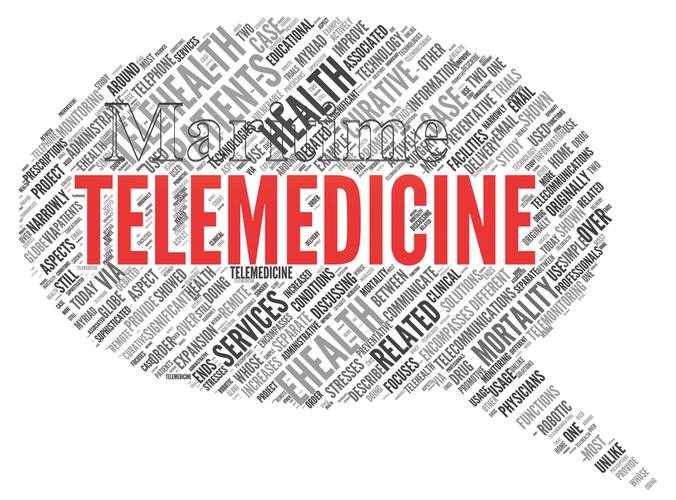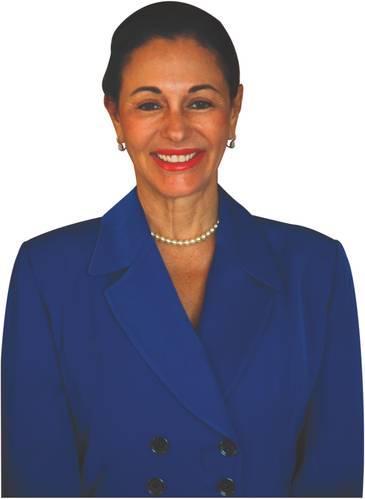For more than 15 years Christina Desimone has driven Future Care to be a transcendent maritime medical care enterprise. While the company fully embraces technology and the advent of telemedicine, it ventures far beyond traditional maritime medical solution providers, managing the logistics of effective and efficient mariner care from the beginning of the incident to its medical conclusion.
As many global maritime sectors struggle to regain profitable footing, medical care for crews at sea is not exactly on top of the list discussion; in fact, crew medical care is often lucky to make the list at all. Christina Desimone, the ubiquitous CEO of Future Care, Inc., is determined to change attitudes.
“We are all very concerned with the shipping markets and their continued low chartering rates,” said Desimone. “But from our perspective, a key issue is the lack of education of the people at the top of the ship owner chain in regards to the real value of a ship-to-shore continuous care telemedicine program for the overall health and well being of their crew.”
Desimone is on a crusade to change attitudes on crew health care issues, but admits that the cornerstone to the effort will be the successful ratification of the Maritime Labor Convention (MLC) from the International Maritime Organization.
“As we are at the forefront of medical services provision to seafarers, and as we manage 25,000 healthy crewmembers every day globally,” said Dr. Joseph T. Sera Jose, MD, Physician Medical Case Manager, Physician Advisor, Future Care, Inc. “Future Care brings a new dynamism and new ideas on how we can further assist, help and support our seafarers, from port side to onboard-vessel at sea.”
Meet Future Care
“First and foremost, Future Care is a medical managed care and medical cost-containment company,” DeSimone said. “We have chosen to work our medical care managed techniques within the unique environment of seafarers that work and live onboard vessels traveling the globe, individuals who are out to sea from a few weeks to a few months. We are doing medical monitoring, keeping in touch with the captain and the crew from the start of the incident until its conclusion. We conduct the diagnosis, we create the treatment plan and we follow up.”
Future Care sets itself apart, as it not only provides a modern and continuously evolving medical care service with its Caring for the Crew program at its core, but Future Care lives, breaths and knows the conditions of the maritime market, courtesy of strategic hires such as Gordon Cooper, Desimone’s Business Development lead who has more than 40 years experience sailing at sea and chartering ships.
“We are unique in the telemedicine community: we understand it from the commercial ship owner point of view,” said Cooper. But he sees the evolution of shipping companies from family-owned to corporate-owned as one of the key hurdles ahead.
“When I went to sea in 1967, (ship owners) were mostly privately and family owned. By the time I left, it was changing, but the people still running the company were old line in their regard for the mariner. When I went to sea it was British crewed, British flagged: We were looked after well with competent crew care,” said Cooper. But times change, and when Cooper was at sea the crews were much larger, specialized in certain jobs, with two to three days in port to receive medical treatment if needed. “The modern freighter with fewer, homogenized crews, it’s a very different kettle of fish today.”
Cooper said that today many of the shipping companies are run “with other people’s money. These investors changed the element. The owners are no longer generational shipping people, and they have no interest in the people at sea. The people at sea are only a cost element. So our services, which look after the people at sea, are harder to sell to organizations that look at the mariner as a cost element.”
“In taking care of our seafarers, Future Care takes the lead by providing a totality of medical and logistical services to its Captains and crew members who are registered with Future Care Caring for the Crew program, whoever they are, wherever they may be,” said Dr. Jose.
$4,000 Per Year
Until the industry reaches the age of full autonomous operations, a healthy, well-cared for crew will continue to be a staple in efficient, profitable operations. As with other product and service providers in the sector which aim to prove that they ‘pay for itself,’ the argument surround crew care increasingly makes sound business sense.
Several of Future Care’s services, particularly the consultation with physicians, are billed by the hour (in six minute increments), and controlling cost is always a concern from a vessel owner’s point of view. But Desimone says that the billing procedure is the best workable solution, reasoning that it is impossible to give a price guarantee, as the amount of service required depends on the incident – is the problem dermatitis or a severed limb – as well as the overall age/health profile of the crew.
But Desimone claims that on average, leveraged across a fleet, Future Care’s services average out to about $4,000 per ship per year to take care of everything.
Ship owners that choose to care for this in-house must realize that in addition to the obvious costs, there many subtle and hidden costs to a ship owner in managing a medical emergency, costs which can mount quickly if uninformed and/or mismanaged. “Future Care Logistical and medical oversight services also includes arrangements and coordination made for medical evacuation, debarkation and repatriation of an ill or injured crewmember, to a hospital, clinic or for a return flight home,” said Dr. Jose. “This entails contact and communication with the different international sovereign coast guard and foreign navy offices, air, sea and land ambulance services for the transport of a crewmember from ship to shore to the hospital.”
There is also an obvious cost effective aspect attained when using Future Care for shore side medical/dental consultations and evaluations because of the preferred medical facility partners of Future Care at every major port across the world, wherein these medical/dental port facilities do provide the best medical/dental care needed at an appropriate cost, with no undue advantage taken to either the crewmember or the client, and with only the best interest and welfare of the crewmember in mind.
Time is Money
“The efficient handling of a crew’s medical profile can really save them commercial bucks,” reasons Cooper. He explains that the Future Care value proposition revolves around the premise that proactively managing maritime medical problems from the inception of the incident to its conclusion, it can work with ship owners to avoid unnecessary course deviations and delays by managing an illness as efficiently as possible, and if the case does call for shore side care working to and through one of its thousands of approved facilities globally with the eye on top notch medical care for the mariner and efficient case and cost management for the owner.
“We feel that we can only get ahead of the field if we get out to the ship owners and let them know that we understand their pain points (when it comes to medical care for the crew and it’s impact to overall ship operations and profitability),” said Cooper. “If you have a sick crewman and have to deviate to a port to get him to a hospital because he wasn’t treated early enough, you could miss 2 or 3 days off of your itinerary and miss your next cargo. That could cost you millions of dollars. We understand that. We need the owners to pass that message down to their technical and crewing managers. That’s the education. It’s tougher today because investors don’t understand this side of the ship operations.”
“When you’re out there in the Indian Ocean, ten days from last port and five days to the next port, you are very alone. And if something goes wrong, your imagination can start to kick-in and make an illness seem much worse than it is.”
Desimone points to a ‘large tanker fleet’ that she said uses the service to full effect. “If a crew member approaches and says he’s having symptoms of illness or injury, scratch or cut, they contact FutureCare immediately” to share information and perhaps images, so that they get an accurate account of the problem and start working towards a solution. She said that in a majority of cases the medical problems are manageable, with just 12 to 15% falling under the “injury” category, and the rest falling in the dermatology, respiratory, gastro intestinal or muscle strain category.
Desimone is quick to stress the partnership nature of the service: “We are really physician advisors to the captain: he’s the gatekeeper, he’s the examiner, and it is the captain and the crew member that mutually determine when the mariner is again fit for duty.”
Technology VIRTUAL Software
When asked to discuss the defining technology that has impacted her business, Desimone was quick to cite “Virtual Software,” as it has most significantly helped to improve the speed and accuracy of diagnosis, treatment and resolution.
Future Care has also started providing Wellness Exams for crews, creating and securely housing electronic medical records that can transfer to new companies and ships with the crew member, and also be used privately when the mariner is on vacation or at home. Most importantly perhaps, in the case of emergency that results in a shore side doctor or hospital visit it can save valuable time and minimize miscommunication with established records available electronically.
Case Study
Dr. Joseph T. Sera Jose, MD , Physician Medical Case Manager, Future Care
Recently a Future Care-registered vessel had an emergency issue while at sea, approximately four days from the nearest port. (The vessel, the captain and the female crew member’s identity have all been withheld due to privacy and HIPAA regulations.) The female crewmember complained of abdominal pain, epigastric in location. The case started with the crewmember feeling anorexic with an apparent loss of appetite, and low-grade to moderate grade fever. This was initially treated as a case of Acute Gastritis, to rule out Appendicitis. Oral medication was advised, with accompanying supportive measures. The symptoms then progressed to moderate to severe abdominal pain located at the right lower quadrant, with intermittent vomiting episodes. Pain scale at 7-9/10 at its most intense. Treated with high dose antibiotics and supportive measures. No pain reliever was provided because the consideration was an Acute Appendicitis.
Future Care’s physician rendered treatment instructions of High dose antibiotics, supportive measures and close monitoring every two hours until the vessel reached the nearest port. On medical debark and subsequent transport and admission into the hospital, a confirming diagnosis of acute appendicitis was made and subsequently surgically treated.
Future care received the commendation of the attending physician, that due to the primary care and immediate initial treatment and supportive measures provided to the crewmember, while onboard and in transit, this contributed to the delay in the progression of the illness for several days, and prevented a possible ruptured appendicitis incident, hence saving the life of the female crewmember.




















